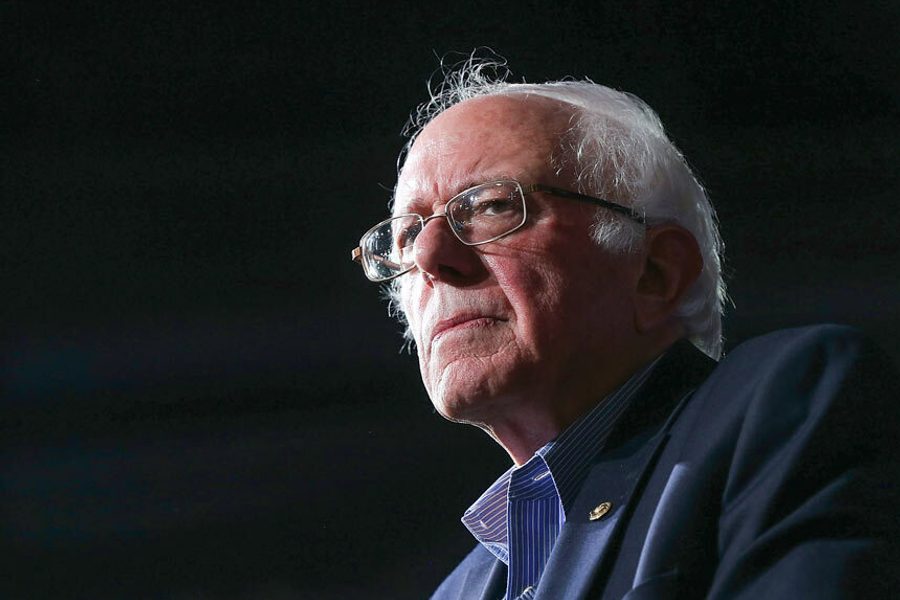Shockingly, the Washington Post Investigated Itself for Anti-Bernie Sanders Bias and Found None
The paper had just run 16 negative stories about Sanders in 16 hours.
Adam Johnson

This post first appeared at FAIR.org.
On Tuesday, FAIR published a straightforward recapping of 16 hours of Washington Post stories that displayed a remarkable run of negative articles about Democratic presidential candidate Bernie Sanders. The FAIR post and a corresponding tweet went viral: retweeted thousands of times, shared on Facebookand Reddit thousands more, and written up in TruthDig,The Young Turks, USUncut and the Daily Caller.
Due to this surge of coverage of our coverage of its coverage (yes, media criticism gets somewhat meta), the Washington Post decided to respond to our criticism, staffing out the unenviable task to The Fix’s Callum Borchers, who gave us “Has the Washington Post Been Too Hard on Bernie Sanders This Week?”
Right off, the framing is inaccurate: The scope wasn’t “this week,” it was a 16-hour period after the Flint, Michigan, debate — and following a weekend in which Sanders won three of four state contests with Hillary Clinton. The do-or-die stakes for Sanders in Michigan couldn’t have been higher, and how one of the most influential newspapers in the United States covered his debate performance and his primary showing was important.
After arguing that working for the Washington Post would not impede his ability to show why the paper was in the right, Borchers begins by casting aspersions on Sanders conspiratorial partisans:
The notion of an anti-Sanders agenda clearly resonated — no surprise, given that the Vermont senator has complained about media coverage, generally, and the Post, specifically.
It doesn’t “resonate,” is the implication, because it’s actually true; it must be that Dear Leader has poisoned minds with thoughts of media conspiracy.
Borchers’ main effort is to narrow the definition of a “negative” story.
First, the definition of “negative” — in this case and in a lot of media griping — is overly broad. For example, the “negative” category, according to FAIR, included a story by The Fix’s Philip Bump with the following headline: “Bernie Sanders Pledges the US Won’t Be No. 1 in Incarceration. He’ll Need to Release Lots of Criminals.”
Bump pointed out that to keep a campaign promise — “At the end of my first term, we will not have more people in jail than any other country” — Sanders would need to set free roughly a quarter of the United States prison population, or about 567,000 criminals.
Is that negative? I mean, it’s math.
At a moment when even the Koch brothers are coming out against overincarceration, a story that thumbnails it as “releasing lots of criminals” can indeed be considered a negative framing, if not more importantly one that shortchanges readers’ intelligence and understanding.
Still, note that “negative” is not intended as the opposite of “factual.” When the George Bush Sr. campaign focused on Michael Dukakis’ prison furlough program — the so-called “Willie Horton” issue — its attacks were nominally fact-based. Yet many people saw them as an unfair exploitation of racial fears, and it was relevant to address them on those terms.
Bigger picture: The reason the graphic and FAIR’s blog post went so viral is because people can intuitively look at a litany of stories over such a short period and see bias. Nature made us pattern-seeking mammals for a reason, and the Washington Post’s post-debate coverage displays an obvious pattern.
And Borchers doesn’t so much deny that pattern as attempt to justify it:
It is important, of course, that a newspaper’s opinion and analysis pieces reflect a range of perspectives. Overall, I can confidently say the Post‘s do. But if you’re going to take a one-day sample — on a day when Sanders was coming off a debate performance that was widely panned — you’re going to find a lot of opinion and analysis that reflects that consensus.
His evidence, though, is unpersuasive; for evidence that Sanders’ debating was “widely panned,” he links only to a piece by Salon’s Amanda Marcotte — author of such articles as “Why I’m Supporting Clinton Over Sanders” and “Let’s Storm the Sanders’ He-Man Women-Haters Club.”
It’s true that many corporate media pundits thought Sanders did poorly in the Flint debate, and that opinion was the content of many of the negative stories that FAIR highlighted. But that only spurs questions about the editorial choice to focus overwhelmingly on debate etiquette in a time period in which Sanders’ actual electoral performance included a victory in the Maine caucuses (announced during the Flint debate) and top pollings in two out of three states. The former reflects pundits’ opinions, while the latter reflects actual voters’ choices.
For a piece ostensibly intended to prove the Post unbiased, Borchers’ conclusion is problematic, in that it suggests that they are biased, but consider it compensatory:
Finally, even if we accept the idea that Post reporting, analysis and commentary combined to put Sanders through the wringer, I fail to see the inherent trouble. As I’ve written before, Sanders skated through the early portion of the primary season on stories about his “yuge” crowds and better-than-expected poll numbers. It was one of the perks of being an underdog.
Readers and voters don’t ask for media to use their coverage to offer “perks” or comeuppances to candidates as they see fit, but to render accurate coverage that reflects what voters are concerned about.
In this case, a dry-eyed reading suggests that the range of perspectives reflected by the Post’s pundit roster simply does not include many people who identify with the challenge to the political establishment Sanders’ candidacy reflects — and considerably more people who feel an affinity with the network of political, economic and media elites who have thrown their support behind Clinton. That this should be reflected in their editorial decision-making is not particularly surprising, just worthy of consideration.








